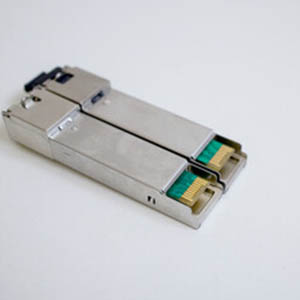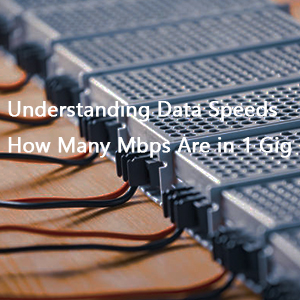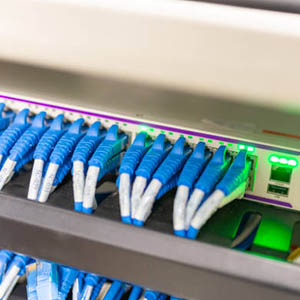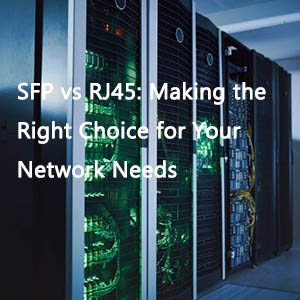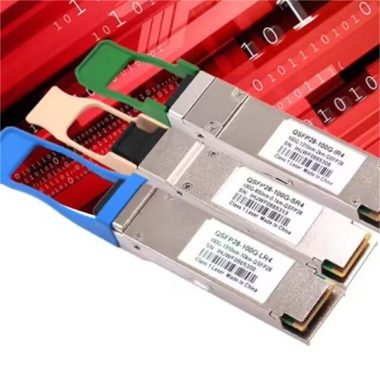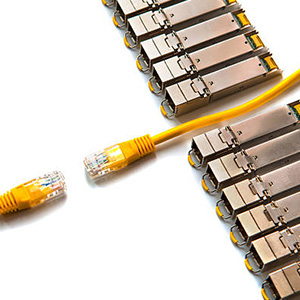In this blog post, we will discuss the basic question “What are SFP modules” and how they work in a typical network environment. Read the full article to understand these basic concepts.
What is an SFP module?
An SFP module is a small device that plugs into the network interface card (NIC) of a computer or other network device. It allows you to change the type of connection your computer uses to send data over the network. For example, if you have an Ethernet cable plugged into one port on your router, but you want to use Wi-Fi instead, you can replace the Ethernet cable with a Wi-Fi adapter card with an SFP module and then plug the SFP into it. You need to make sure both ends are compatible (they usually are), then just pop one end out and plug the other in.

How do SFP modules work?
They are small, self-contained electronic devices that have a pair of transmitters and receivers. They are used to convert one form of electrical signals into another. In fiber-optic communications, SFP modules work by taking light pulses transmitted through a fiber-optic cable and converting them into electrical signals that can be transmitted over copper wire or other mediums.
The modules work by taking light transmitted through a fiber-optic cable and converting it into a series of electrical pulses. These pulses are then sent over copper wire or other medium as needed. An SFP module is a small device that converts incoming light pulses into electrical signals. The module works by receiving light transmitted through a fiber optic cable and converting it into a series of electrical pulses. These pulses are then sent over copper wire or other medium as needed.
SFP modules are used in many applications such as Gigabit Ethernet, Fiber Channel, 10 Gigabit Ethernet, InfiniBand, and SONET/SDH. Fiber SFP modules are small, self-contained electronic devices that transmit and receive light pulses over fiber optic cables. They are used in fiber optic communication systems to convert electrical signals into light pulses, which can then be transmitted over long distances using glass or plastic fibers. If you are looking for a valuable solution, you can try Ruijie Networks’ RG-NBS3200-24SFP/8GT4XS, 24-Port Gigabit SFP, Layer 2 Managed Switch with 8 Combo RJ45 Ports, 4*10G. It has enterprise-grade quality, ensures high performance, also supports IP camera identification, and provides unique value for CCTV networks.
SFP Modules vs. SFP+ Modules
Besides the question of “what is an SFP module,” another step in choosing the right SFP module is deciding whether you need an SFP module or an SFP+ module. While both are used for fiber optic connections, they have several key differences. If you are looking for high-speed fiber optic modules, there are two main options: SFP modules and SFP+ modules. Both are form factors that can be used with many different types of equipment. However, they differ in size (and therefore physical compatibility) and speed capabilities.
SFP modules are smaller than SFP+ modules—they can fit into smaller spaces in your network equipment and are generally easier to install. They also offer higher speeds than their larger counterparts.
SFP+ modules have more pins on them because they are designed to connect directly to copper cables instead of fiber optic cables; this makes them ideal for use in data centers, where there is already enough cabling infrastructure but not necessarily enough space for all the new equipment.
SFP modules are designed to work with older equipment and can be used with many different types of networks and switches. They are also more affordable than their newer counterparts, making them a popular choice among businesses looking to upgrade existing technology without having to spend a lot of money.
SFP+ modules offer faster speeds than traditional SFP (up to 10Gbps), but they are also generally more expensive than traditional SFP because they offer more bandwidth per port (40Gbps vs 10Gbps).
Conclusion
This concludes our discussion on the question “What are SFP modules?” SFP modules are a great solution for connecting your devices to fiber optic cables. They can be used in network devices like routers and switches, but also in other devices like printers and scanners. In conclusion, SFP modules are a great choice if you need to connect two devices to enable them to communicate with each other over the internet or any other type of network connection.

